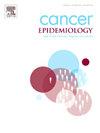肺癌职业研究中吸烟的间接调整:对现有方法及其应用的系统回顾
IF 2.3
3区 医学
Q3 ONCOLOGY
引用次数: 0
摘要
在职业性肺癌研究中,吸烟是一个重要的危险因素,也可能是一个主要的混杂因素。但是,由于经常无法获得关于吸烟的个人资料,因此可以使用间接调整方法来解释吸烟可能造成的混淆。因此,我们的目的是概述在职业暴露和肺癌风险研究中可用的吸烟间接调整方法。我们对2000年1月1日至2025年4月2日期间发表的应用统计方法间接调整吸烟的相关研究进行了系统检索,以捕捉近几十年的发展。研究从Embase、MEDLINE和Web of Science检索。15项研究符合我们的纳入标准并被纳入。我们将研究分为四种间接吸烟调整方法:(1)调整后的数据没有分布;(2)调整后数据的分布;(3)负性控制结果;(4)因子分析模型。对于有外部比较组的研究,间接调整前后估计值的百分比变化范围为−36.1 %_to_+ 17.3 %,而内部比较组的相应范围为−16.2 %_to_+ 47.8 %。间接调整方法的选择取决于参考组的使用(外部还是内部)和可用的数据。调整方法1和2使用来自其他类似工人的部分队列数据或辅助数据,如果此类数据可用,则可能优于方法3和4。如果缺乏这样的数据,但有更强的假设,方法3和方法4可能很适合。本文章由计算机程序翻译,如有差异,请以英文原文为准。
Indirect adjustment of tobacco smoking in occupational studies of lung cancer: A systematic review of the available methods and their applications
Tobacco smoking is an important risk factor and potentially a major confounding factor in occupational lung cancer studies. However, as individual information on tobacco smoking is often not available, indirect adjustment methods may be used to account for potential confounding from smoking. Therefore, we aimed at providing an overview of the available indirect adjustment methods for smoking in studies of occupational exposures and lung cancer risk. We conducted a systematic search of relevant studies that applied statistical methods for indirect adjustment of tobacco smoking and were published between 1-Jan-2000 and 2-Apr-2025 to capture developments in recent decades. Studies were retrieved from Embase, MEDLINE, and Web of Science. Fifteen studies fulfilled our inclusion criteria and were included. We grouped the studies into four methods of indirect smoking adjustment: (1) without distributions for adjusted data; (2) distributions for adjusted data; (3) negative control outcomes; (4) factor analysis models. For studies with an external comparison group, percentage change in estimates from before to after indirect adjustment ranged −36.1 %_to_+ 17.3 %, while the corresponding range for those with internal comparison was −16.2 %_to_+ 47.8 %. The choice of indirect adjustment method depends on the use of reference group (external vs. internal) and the data available. Adjustment methods 1 and 2 use partial cohort data or ancillary data from other similar workers and may be preferable over methods 3 and 4, if such data are available. Methods 3 and 4 may be well suited if such data are lacking but have stronger assumptions.
求助全文
通过发布文献求助,成功后即可免费获取论文全文。
去求助
来源期刊

Cancer Epidemiology
医学-肿瘤学
CiteScore
4.50
自引率
3.80%
发文量
200
审稿时长
39 days
期刊介绍:
Cancer Epidemiology is dedicated to increasing understanding about cancer causes, prevention and control. The scope of the journal embraces all aspects of cancer epidemiology including:
• Descriptive epidemiology
• Studies of risk factors for disease initiation, development and prognosis
• Screening and early detection
• Prevention and control
• Methodological issues
The journal publishes original research articles (full length and short reports), systematic reviews and meta-analyses, editorials, commentaries and letters to the editor commenting on previously published research.
 求助内容:
求助内容: 应助结果提醒方式:
应助结果提醒方式:


